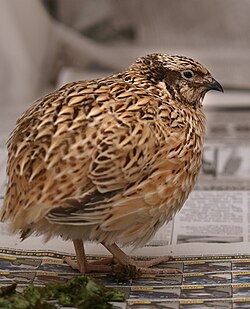 Professor Takashi Yoshimura and colleagues of the Institute of Transformative Bio-Molecules (WPI-ITbM) of Nagoya University have finally found the missing piece in how birds sense light by identifying a deep brain photoreceptor in Japanese quails, in which the receptor directly responds to light and controls seasonal breeding activity. Although it has been known for over 100 years that vertebrates apart from mammals detect light deep inside their brains, the true nature of the key photoreceptor has remained to be a mystery up until now. This study led by Professor Yoshimura has revealed that nerve cells existing deep inside the brains of quails, called cerebrospinal fluid (CSF)-contacting neurons, respond directly to light. His studies also showed that these neurons are involved in detecting the arrival of spring and thus regulates breeding activities in birds. The study published online on July 7, 2014 in Current Biology is expected to contribute to the improvement of production of animals along with the deepening of our understanding on the evolution of eyes and photoreceptors.
Professor Takashi Yoshimura and colleagues of the Institute of Transformative Bio-Molecules (WPI-ITbM) of Nagoya University have finally found the missing piece in how birds sense light by identifying a deep brain photoreceptor in Japanese quails, in which the receptor directly responds to light and controls seasonal breeding activity. Although it has been known for over 100 years that vertebrates apart from mammals detect light deep inside their brains, the true nature of the key photoreceptor has remained to be a mystery up until now. This study led by Professor Yoshimura has revealed that nerve cells existing deep inside the brains of quails, called cerebrospinal fluid (CSF)-contacting neurons, respond directly to light. His studies also showed that these neurons are involved in detecting the arrival of spring and thus regulates breeding activities in birds. The study published online on July 7, 2014 in Current Biology is expected to contribute to the improvement of production of animals along with the deepening of our understanding on the evolution of eyes and photoreceptors.
Many organisms apart from those living in the tropics use the changes in the length of day (photoperiod) as their calendars to adapt to seasonal changes in the environment. In order to adapt, animals change their physiology and behavior, such as growth, metabolism, immune function and reproductive activity. “The mechanism of seasonal reproduction has been the focus of extensive studies, which is regulated by photoperiod” says Professor Yoshimura, who led the study, “small mammals and birds tend to breed during the spring and summer when the climate is warm and when there is sufficient food to feed their young offspring,” he continues. In order to breed during this particular season, the animals are actually sensing the changes in the seasons based on changes in day length. “We have chosen quails as our targets, as they show rapid and robust photoperiodic responses. They are in the same pheasant family as the roosters and exhibit similar characteristics. It is also worth noting that Toyohashi near Nagoya is the number one producer of quails in Japan,” explains Professor Yoshimura. The reproductive organs of quails remain small in size throughout the year and only develop during the short breeding season, becoming more than 100 times its usual size in just two weeks.
No comments:
Post a Comment